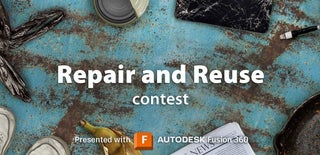Introduction: Reclaimed Cedar Sofa Table
After the purchase and assembly of a flat-pack sofa by Home Reserve, we needed a new side table that would better fit on the side of the sofa. We had some cedar boards that we salvaged from an old cabinet and a piece of metal pipe that we wanted to incorporate into the design.
Supplies
Materials/Tools:
- Vintage Cedar Wood
- 1in Pipe/flange (Amazon)
- SawStop Jobsite Saw (SawStop)
- Rockler Silicone Glue Brush (Rockler)
- Rockler Silicone Glue Keeper (Rockler)
- Mind Your Own Beeswax (Amy Howard Home)
- Klean Strip Odorless Mineral Spirits (Amazon)
- DEWALT 36 in. 600 lb. Trigger Clamp w/3.75 in. Throat Depth (Home Depot)
- RIDGID 18V Cordless 5 in. Random Orbit Sander (Home Depot)
- Super Fine Grit Steel Wool (Home Depot)
- DEWALT 20-Volt Max Lithium-Ion 18-Gauge Cordless Brad Nailer Kit (Home Depot)
- 12 in. Laser Etched Aluminum Rafter Square (Home Depot)
Step 1: Plan and Clean Up Salvaged Cedar
This simple sketch gives you the measurements which are based on the height of the metal pipe as well as the available width of the cedar board we are using.
Before we made any cuts on the board, we cleaned up the edges and removed the nails. We then cut all the pieces we needed on our Saw Stop table saw.
Step 2: Dry Fit, Clean, and Wax
We are adding a metal pipe as a design feature. Here we are dry fitting all the parts before cutting the board to size.
These boards cleaned up beautifully! I was easily able to sand away decades of dirt revealing the beauty of the grain and color underneath.
The metal pipe and flanges were cleaned with mineral spirits. After they were dry, we applied a coat of beeswax and once that was dry, buffed it with 0000 fine steel wool.
All of the cedar pieces are finished with wax. Before the pocket was attached, the interior was waxed. The blue tape is just a reminder not to wax the edge that will be attached to the body of the table.
Step 3: Assemble
Time to assemble. We used wood glue to assemble as well as clamps to hold everything while it dried. At this point, the pipe and flanges are not attached but are in place just to hold everything at the right distance.
The pocket is glued into place six inches from the bottom of the table. Steph added a few brad nails to hold the pocket in place while the glue dried.
The entire outside of the table gets a coat of wax and then buffed with 0000 steel wool for a beautiful matte finish.
Lastly, the pipe is screwed into place. You'll notice it is off-center which is by design to make it easier to utilize the tech pocket.
Step 4: Add Tech and Pop Socket
All the tech is now easy to reach and there is also a convenient place for a phone with the attached Pop Socket holder.
For more details, please visit our website!

Participated in the
Repair and Reuse Contest













